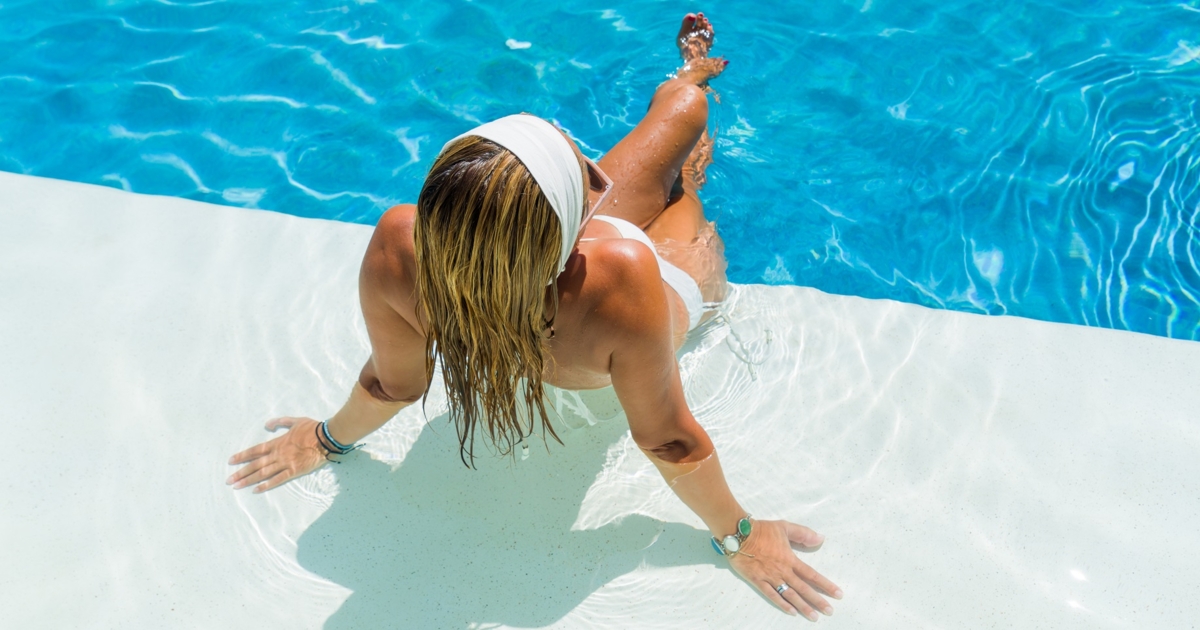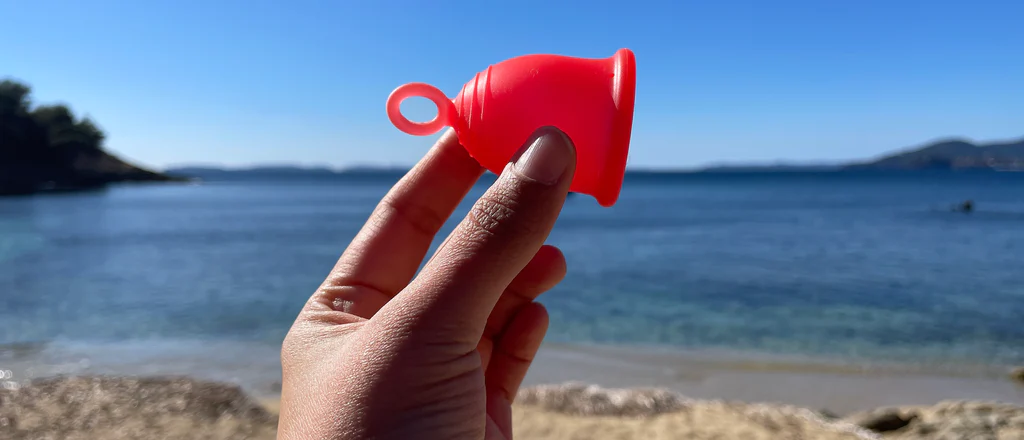Are you tired of missing out on swimming during your period? Well, I have great news for you! You can absolutely swim with a menstrual cup. Whether you’re hitting the pool, lake, river, or even the sea, a menstrual cup allows you to enjoy the water without any worries. Unlike tampons, which can absorb water and increase the risk of infections, menstrual cups are a safer and more comfortable option for swimmers. So, say goodbye to those period blues and dive right in!
Contents
- 1 Can You Swim with a Menstrual Cup?
- 2 Benefits of Swimming with a Menstrual Cup
- 3 How to Prepare for Swimming with a Menstrual Cup
- 4 Addressing Common Concerns and Myths
- 4.1 Can the Menstrual Cup Leak while Swimming?
- 4.2 Does Swimming Affect the Menstrual Cup?
- 4.3 Can You Get an Infection from Swimming with a Menstrual Cup?
- 4.4 Should You Change Your Menstrual Cup after Swimming?
- 4.5 What Do Female Swimmers Wear during Periods?
- 4.6 How Long Can You Swim with a Menstrual Cup?
- 5 Conclusion
- 6 Frequently Asked Questions
Can You Swim with a Menstrual Cup?

Swimming on your period can be a worry-free experience with the use of a menstrual cup. Unlike tampons, menstrual cups do not absorb water, making them a safe and comfortable option for swimming. With a menstrual cup, you can swim for up to 12 hours without the risk of leaks or discomfort. In fact, many athletes, including triathletes, rely on menstrual cups for their period needs.
One of the key advantages of using a menstrual cup for swimming is the safety it provides. Tampon users may find that tampons absorb pool or seawater while swimming, which increases the risk of bacterial or vaginal infections. In contrast, menstrual cups create a seal with the vaginal canal when inserted correctly, preventing water from entering and reducing the risk of infections.
Not only are menstrual cups safe for swimming, but they also offer comfort. Most menstrual cup users report barely feeling their cups and often forget that they are on their period. The flexibility of menstrual cups allows them to move with your body, providing a comfortable and secure fit while swimming.
If you prefer, you can also choose to swim without any product at all. Some individuals may feel more comfortable without wearing a menstrual cup or tampon during swimming. It is entirely up to personal preference and what makes you feel most at ease.
Whether you opt for a menstrual cup or choose to swim without any product, it is important to remember that swimming with a period is completely normal and safe. Say goodbye to the limitations of tampons and embrace the freedom of swimming with a menstrual cup.
Benefits of Swimming with a Menstrual Cup
Convenience and Comfort
Swimming with a menstrual cup offers a range of benefits that make it a convenient and comfortable option for women. Here’s why:
- No need for constant changes: Unlike tampons, which need to be changed every few hours, menstrual cups can be worn for up to 12 hours. This means you can swim without worrying about leaks or discomfort, allowing you to fully enjoy your time in the water.
- No need for additional protection: When using a menstrual cup, you don’t need to worry about wearing additional protection, such as a pad or pantyliner. The cup provides reliable protection against leaks, giving you peace of mind while swimming.
- Freedom of movement: Menstrual cups are designed to stay in place, even during physical activities. This means you can swim, dive, and enjoy all your favorite water sports without any restrictions. Say goodbye to the limitations of tampons and embrace the freedom of swimming with a menstrual cup.
No Need for Additional Protection
One of the key advantages of swimming with a menstrual cup is that it eliminates the need for additional protection. Here’s why this is a benefit:
- No more worrying about visible lines: With tampons, there is always a risk of visible lines or strings, which can be embarrassing, especially when wearing a swimsuit. With a menstrual cup, there are no visible lines or strings, allowing you to feel confident and comfortable in your swimwear.
- Reduced risk of leaks: Menstrual cups create a seal with the vaginal canal, preventing water from entering and reducing the risk of leaks. This means you can swim with confidence, knowing that your menstrual cup will provide reliable protection throughout your swim.
- No discomfort or irritation: Menstrual cups are made of medical-grade silicone or latex, which is soft and flexible. This makes them comfortable to wear and less likely to cause irritation or discomfort, even during prolonged periods of swimming.
Swimming with a menstrual cup offers convenience, comfort, and freedom of movement. With no need for constant changes and additional protection, you can enjoy your time in the water without any worries. So, go ahead and dive in with confidence, knowing that your menstrual cup has got you covered.
How to Prepare for Swimming with a Menstrual Cup

Emptying and Cleaning the Cup
Before you head to the pool or beach, it’s important to make sure your menstrual cup is clean and empty. Follow these simple steps to prepare your cup for swimming:
- Find a private and clean area where you can comfortably remove your cup.
- Wash your hands thoroughly with soap and water.
- Carefully remove the cup by gently pulling on the stem or base. Be cautious not to spill any contents.
- Empty the contents of the cup into the toilet.
- Rinse the cup with warm water to remove any residual blood.
- If you have access to clean water and a mild soap, you can wash the cup with it. Otherwise, simply wiping it with a clean tissue or toilet paper will suffice.
- Reinsert the cup following the manufacturer’s instructions. Make sure it is properly positioned and creates a seal.
Checking for Proper Placement
To ensure a worry-free swim, it’s essential to check that your menstrual cup is properly in place. Here’s how to do it:
- Stand in a comfortable position, such as with one leg lifted onto the toilet seat or with a foot propped up on the edge of the bathtub.
- Insert one or two fingers into your vagina and gently feel around the base of the cup.
- Confirm that the cup is fully open and that the rim is positioned below your cervix.
- Give the cup a gentle tug to ensure it is securely in place. If it moves easily or feels loose, reposition it to create a better seal.
Choosing the Right Swimwear
Selecting the right swimwear can enhance your comfort and confidence while swimming with a menstrual cup. Consider the following tips:
- Opt for a swimsuit with a snug fit. This will help keep your cup in place and prevent any movement or shifting.
- Consider wearing a one-piece swimsuit or a bikini with a high-waisted bottom. These styles provide additional coverage and support, which can help keep your cup secure.
- If you prefer wearing a tampon or pad as backup, choose swimwear with a built-in pocket or lining for added protection.
- Dark-colored swimwear can help conceal any potential leaks, providing you with extra peace of mind.
With these simple preparations, you can confidently enjoy swimming while wearing a menstrual cup. Remember to empty and clean the cup before swimming, check for proper placement, and choose swimwear that offers comfort and security. Now, dive in and make the most of your time in the water without any worries.
Addressing Common Concerns and Myths

Can the Menstrual Cup Leak while Swimming?
One common concern that many women have when considering swimming with a menstrual cup is the possibility of leaks. However, it’s important to note that when inserted correctly, menstrual cups are highly effective at preventing leaks.
Menstrual cups create a seal with the vaginal canal, which helps to keep the cup securely in place and prevent any menstrual blood from leaking out. This seal is designed to withstand physical activities such as swimming, ensuring that you can enjoy your time in the water without any worries.
Does Swimming Affect the Menstrual Cup?
Another myth that often circulates is that swimming can affect the positioning or effectiveness of a menstrual cup. However, this is simply not true. Swimming has no impact on the position of the cup or its ability to collect menstrual blood.
The water pressure experienced while swimming does not cause the cup to dislodge or move out of place. As long as the cup is properly inserted before getting into the water, it will stay in position and continue to provide reliable protection against leaks.
Can You Get an Infection from Swimming with a Menstrual Cup?
There is a misconception that swimming with a menstrual cup can increase the risk of infections. However, this is not the case. Menstrual cups are made of medical-grade silicone or latex, which are non-porous materials that do not harbor bacteria.
In fact, swimming in chlorinated pools can actually help to keep the cup clean and hygienic. The chlorine in the water acts as a disinfectant, reducing the risk of any potential infection. Just make sure to properly clean your cup before and after swimming to maintain its hygiene.
Should You Change Your Menstrual Cup after Swimming?
Many women wonder if it’s necessary to change their menstrual cup after swimming. The answer is no, as long as the cup is not full. Menstrual cups can be worn for up to 12 hours, so unless it’s been that long since you last emptied it, there’s no need to remove and replace it immediately after swimming.
However, if your cup is nearing its maximum capacity or if you simply prefer to start fresh, you can certainly choose to change it after swimming. It’s a personal preference that depends on your comfort level and individual needs.
What Do Female Swimmers Wear during Periods?
Female swimmers have various options when it comes to swimwear during their periods. Some women choose to wear their regular swimsuits with a menstrual cup for added protection against leaks. Others prefer to wear swim bottoms with built-in menstrual protection, such as period swimwear or swim shorts with built-in liners.
The choice ultimately depends on your comfort and personal preference. Experiment with different options to find what works best for you and allows you to swim with confidence and freedom.
How Long Can You Swim with a Menstrual Cup?
The great thing about menstrual cups is that they can be worn for an extended period of time, including while swimming. You can swim with a menstrual cup for as long as you would normally wear it, up to 12 hours.
This means that you can enjoy a full day at the beach or pool without having to worry about changing your cup frequently. Just remember to empty and clean your cup according to the manufacturer’s instructions before and after swimming to maintain its hygiene and effectiveness.
By addressing these common concerns and dispelling the myths surrounding swimming with a menstrual cup, you can feel confident and comfortable while enjoying your time in the water. Remember to always follow the proper insertion and removal techniques, and choose the swimwear option that works best for you. With a menstrual cup, swimming during your period can be a hassle-free and enjoyable experience.
Conclusion
Swimming with a menstrual cup is a convenient and comfortable option that allows for freedom of movement. The seal created by the cup prevents leaks, providing reliable protection while swimming. Made of soft and flexible materials, menstrual cups are comfortable to wear and do not affect their positioning or effectiveness in the water.
One of the advantages of menstrual cups is that they are made of non-porous materials, which means they do not harbor bacteria. Additionally, swimming in chlorinated pools can help keep the cup clean. With a menstrual cup, there is no need to change immediately after swimming, as they can be worn for up to 12 hours.
Female swimmers have various options for swimwear during their periods, and with proper insertion and removal techniques, swimming with a menstrual cup can be a hassle-free and enjoyable experience. So, if you enjoy swimming and want the freedom to swim while on your period, consider using a menstrual cup for a worry-free swim.
Frequently Asked Questions
What should I wear to swim on my period?
To swim on your period, it’s best to wear internal period protection such as a tampon or menstrual cup while swimming. Alternatively, period swimsuits mean you can swim without leaking, great for those who dislike internal protection options.
Is it better to swim with a tampon or menstrual cup?
Menstrual cups and menstrual discs are great for swimming if you have an irregular period since they have the ability to hold either a lot or a little bit of menstrual blood, all in one product and they don’t dry you out like tampons can.
What do female swimmers do on their period?
It’s important to always wear a tampon or use a menstrual cup to collect the blood and keep it from entering the pool. Although the pressure of being immersed in water can slow the flow, your period will carry on to some degree, even if you can’t see evidence of it in your swimsuit.
How do Olympic swimmers deal with periods?
Many athletes who do competitive swimming during periods use tampons and menstrual cups to keep their flow in check. Some athletes may not have regular periods due to their intense exercise regimen. Others opt for birth control, which can alter their cycle so that they don’t have full periods.
I am a medical student with experience and interest in Women’s health and well-being.